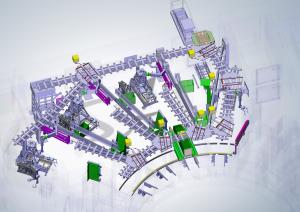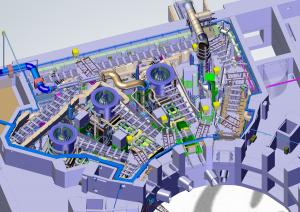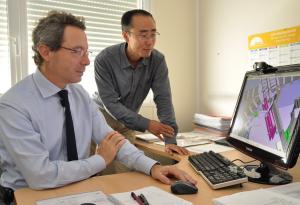Designing components with remote handling in mind
The ITER machine is extremely complex; its "innards" are so densely packed that remote handling cannot be improvised. "Remote handling needs to be an intrinsic feature of a component's design. It is essential that component designers and remote handling engineers enter a structured dialogue as early as possible in the process and proceed hand-in-hand until the process is complete."
The CDR Review Panel was particularly impressed by the virtual reality animations—realistic 3D sequences used to assess the equipment trajectories in the complex neutral beam cell environment. "Like in a flight simulator, these animations provide a lot of information with minimum effort, highlighting, for example, where and when a clash between equipment and structures could occur."




